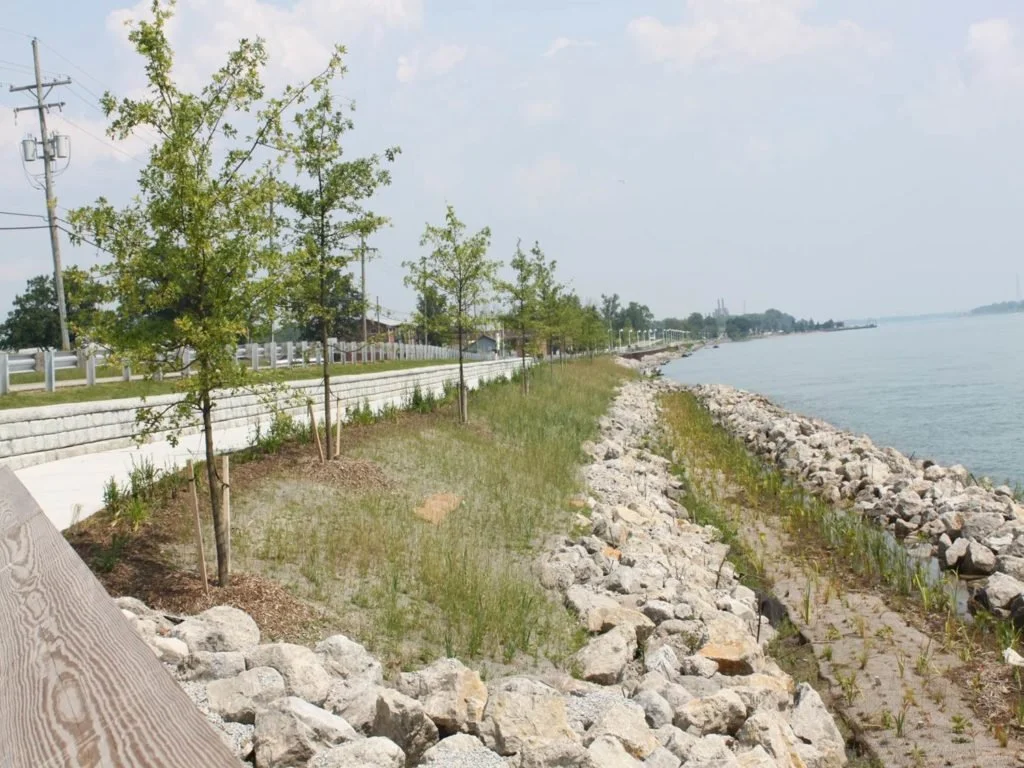Restored Shore in Marysville Brings the Community and Wildlife Back to the St. Clair River
The city of Marysville has restored a natural habitat to part of the St. Clair River shore by removing a failing seawall. The sloping habitat has reduced the destructive power of the waves in the river while also addressing the loss of shoreline wetlands along the St. Clair.
Description
A deteriorating seawall in Marysville was the focus of the habitat restoration project along the St. Clair River. The seawall had been installed to reinforce the banks of the river, but had ended up causing multiple problems, all of which could be addressed by removing the seawall and replacing it with a natural, sloping shore. When waves hit seawalls, the energy that would normally be absorbed by the plants on the shore is reflected back out into the river, causing rough waters that also begin to erode the bottom of the river. Installing shoreline wetland areas with strategically placed rock wave breaks helped stabilize the riverbank like the seawall did, but the living shoreline also absorbed the energy of the waves—calming the waters and preventing damage to riverbank. The living shoreline provided habitat for fish and wildlife, which helped the St. Clair River AOC address one of the impairments along the river that keeps it on the AOC list.
Resource Challenges Addressed
Erosion
Rough waves
Lack of fish and wildlife habitat
Location
Marysville, Mich.
Approximate Cost
$1,800,000, with $1,500,000 of that coming from the Great Lakes Restoration Initiative
Key Partners
Great Lakes Restoration Initiative, Cardno, Marysville Department of Public Works, Raymond Excavating
Types of Jobs Created
Excavators, heavy equipment operators, restoration contractors, landscapers, and general laborers
MARYSVILLE LIVING SHORELINE
With the seawalls removed and a sloping, natural landscape restored, the erosion issues caused by the seawall should stop. In addition, habitat now exists for wildlife in the St. Clair and people can walk along the river and enjoy the view. Credit: Cardno.
Results and Accomplishments
Over 1,500 feet of seawall was removed making way for natural vegetation to be planted along the shore, both in and out of the water. Over 10,000 plants of either prairie or wetland species were planted to help restore the habitat for fish and wildlife. Other plants that thrive when half submerged under water at the shoreline were also installed. These plants will provide habitat for fish and wildlife while also absorbing the impact of waves as they hit the shore. Several stone areas were placed just offshore to provide potential fish spawning areas. A newly installed boardwalk allows the public to enjoy the view of the restored shore. In March, the American Society of Civil Engineers, Southeast Michigan Branch, awarded the James L. Bliskey 2014 Quality of Life Project of the Year to the project coordinators—Cardno.

